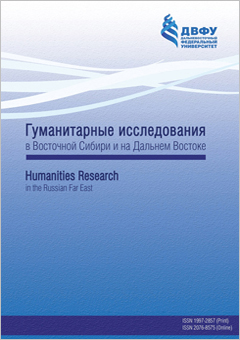The aesthetics of Ancient Asian architecture in Nikolay Brunov’s «Essays on the history of architecture»: cultural borrowings in art
DOI:
https://doi.org/10.24866/1997-2857/2025-2/14-19Keywords:
Nikolay Brunov, aesthetics of architecture, Ancient India, Ancient China, Ancient Japan, mentality, cultural code, cultural borrowingsAbstract
This article analyzes Nikolay Brunov’s approach to interpreting the aesthetics of Ancient Asian architecture as presented in his seminal work «Essays on the History of Architecture». The Soviet art historian sought to trace how cultural codes and collective mentality shaped architectural forms in Ancient India, China, and Japan. Central to the study is Brunov's concept of «non-structiveness» – a defining characteristic of Asian architecture manifested through the intentional dissolution of boundaries between natural and constructed spaces. The paper emphasizes the importance of meaningful adoption of Eastern aesthetic principles in contemporary architecture, which must be grounded in a profound understanding of their philosophical and cultural foundations.
Downloads
References
1. Брунов Н.И. Очерки по истории архитектуры: в 3-х т. Т. 1. М.: Центрполиграф, 2003. = Brunov, N.I., 2003. Ocherki po istorii arkhiterktury: v 3-kh t. T. 2 [Essays on the history of architecture: in 3 volumes. Vol. 1]. Moskva: Tsentrpoligraf. (in Russ.)
2. Гегель Г.В.Ф. Лекции по эстетике: в 2-х т. Т. 2. СПб.: Наука, 2007. = Hegel, G.W.F., 2007. Lektsii po estetike: v 2-kh t. T. 2 [Lectures on aesthetics: in 2 volumes. Vol. 2]. Sankt-Peterburg: Nauka. (in Russ.)
3. Ингарден Р. Исследования по эстетике. М.: Издательство иностранной литературы, 1962. = Ingarden, R., 1962. Issledovaniya po estetike [Papers on aesthetics]. Moskva: Izdatel’stvo inostrannoi literatury. (in Russ.)
4. Панофски Э. IDEA: к истории понятия в теориях искусства от античности до классицизма. СПб.: Аксиома, 1999. = Panofsky, E., 1999. IDEA: k istorii ponyatiya v teoriyakh iskusstva ot antichnosti do klassitsizma [Idea: a concept in art theory]. Sankt-Peterburg: Aksioma. (in Russ.)
5. Флоренский П.А. Анализ пространственности и времени в художественно-изобразительных произведениях. М.: Прогресс, 1993. = Florenskii, P.A., 1993. Analiz prostranstvennosti i vremeni v khudozhestvenno-izobrazitel’nykh proizvedeniyakh [Analysis of spatiality and time in the works of visual art]. Moskva: Progress. (in Russ.)
6. Юнг К.Г. О психологии восточных религий и философий. М.: Медиум, 1994. = Jung, C.G., 1994. O psikhologii vostochnykh religii i filosofii [On psychology of Eastern religions and philosophies]. Moskva: Medium. (in Russ.)
7. Ячин С.Е. Состояние метакультуры. Владивосток: Дальнаука, 2010. = Yachin, S.E., 2010. Sostoyanie metakul’tury [The condition of metaculture]. Vladivostok: Dal’nauka. (in Russ.)
Downloads
Published
Issue
Section
License
Copyright (c) 2025 Светлана Юрьевна ПЧЕЛКИНА

This work is licensed under a Creative Commons Attribution-NonCommercial-NoDerivatives 4.0 International License.














